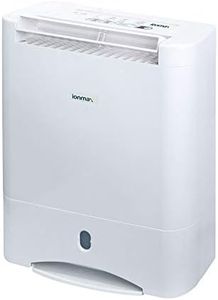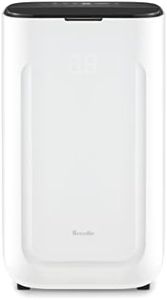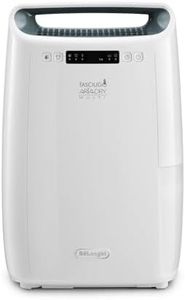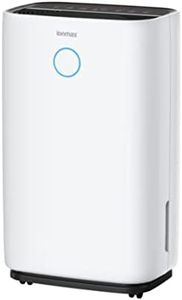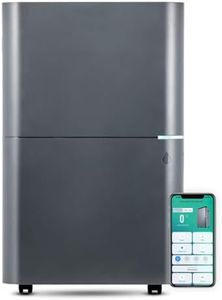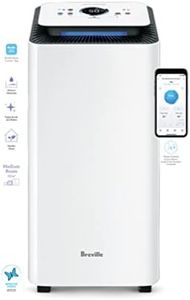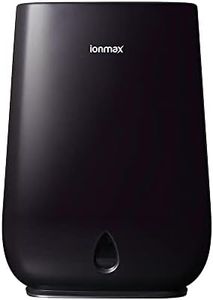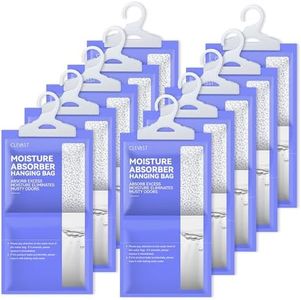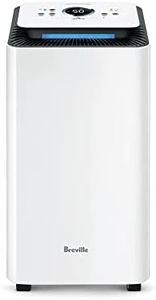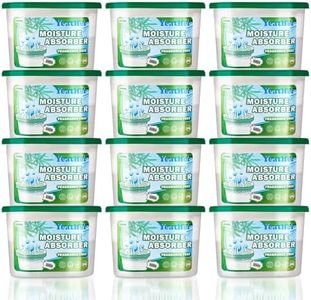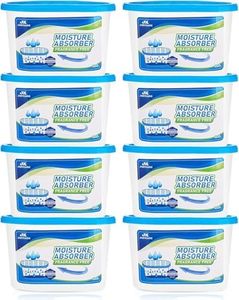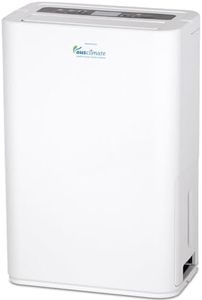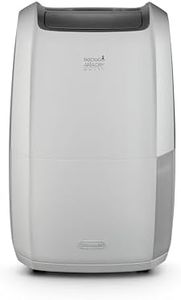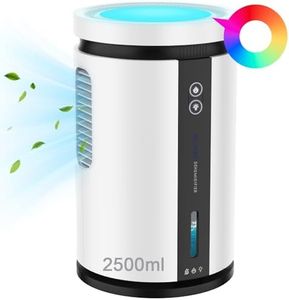We Use CookiesWe use cookies to enhance the security, performance,
functionality and for analytical and promotional activities. By continuing to browse this site you
are agreeing to our privacy policy
10 Best Dehumidifier For Closet
From leading brands and best sellers available on the web.Buying Guide for the Best Dehumidifier For Closet
Choosing the right dehumidifier for your closet is important to help prevent mold, mildew, and musty odors. Closets are small, enclosed spaces that can easily trap moisture, leading to damage to clothes, shoes, or stored items. When picking a dehumidifier for a closet, focus on getting a device that matches the space’s size, offers convenient operation, and is safe to use in small areas. Understanding the key specifications below will help you narrow down your options and ensure your closet stays dry and fresh.Moisture Removal CapacityThis spec tells you how much water the dehumidifier can remove from the air in a day, usually measured in pints or milliliters. In a closet, you won't need a large unit here; compact devices with lower capacity (around 250-500ml daily) are usually sufficient. If your closet is particularly damp or you live in a very humid climate, a slightly higher capacity could be useful. Always pick a capacity that matches both the size of your closet and the amount of moisture you expect based on your home’s environment.
Tank SizeThe water tank or reservoir is where the dehumidifier stores the moisture it collects. Tank size affects how often you need to empty it: small tanks (about 500ml or less) need frequent emptying but make for a compact device ideal for closets. Larger tanks (over 1 liter) mean less maintenance but may be physically too big. For most closets, a tank between 500ml and 1L offers a good balance. Choose based on how often you’re willing to empty it and the available space in your closet.
Physical Size and PlacementThis refers to the dimensions and form of the dehumidifier. Closets usually have limited floor or shelf space, making compact, vertical units more suitable. Some units can hang or attach to closet rods, which can save space. Measure your available area before buying and consider whether you want the unit to sit, hang, or be stored out of sight.
Noise LevelNoise level is how much sound the dehumidifier makes while running, typically measured in decibels. Very quiet units (around 30-40 dB) are ideal for closets, especially if the closet is near living or sleeping areas. If you’re sensitive to noise or will run the dehumidifier at night, opt for ultra-quiet models. For some very small or passive moisture-absorbing models, there may be no noise at all.
Power SourceThis tells you how the dehumidifier is powered. Most small models are plug-in electric, but there are also battery-powered or even rechargeable/desiccant types that use no electricity. Electric models are more effective for ongoing use but require an outlet nearby. Battery or desiccant versions are portable, silent, and don’t need a plug, but they may need recharge or replacement packs. Consider your closet’s access to power and your maintenance preferences when choosing.
Safety FeaturesSafety features might include automatic shutoff when the tank is full, tip-over protection, and fire safety certifications. These are especially important in small, enclosed spaces where you may not check the device frequently. Always look for automatic shutoff as a basic safety feature, and consider additional features if your closet is crowded or if you want additional peace of mind.
